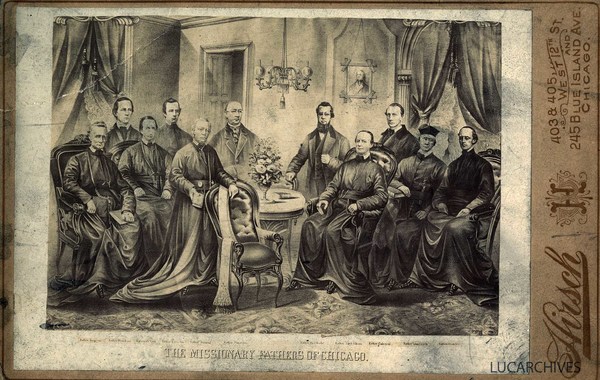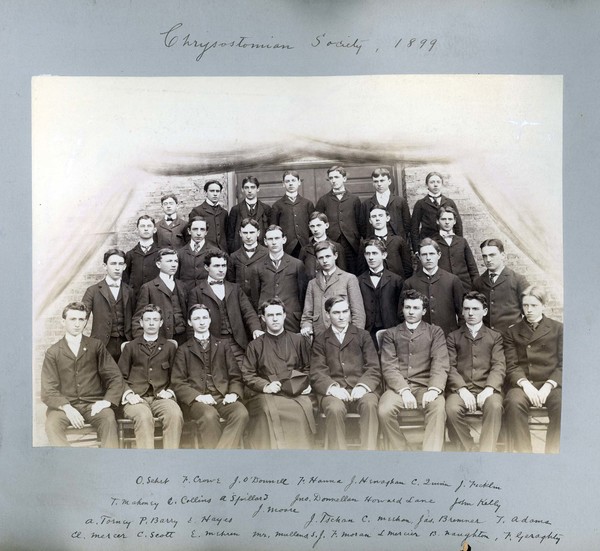The Early Years: 1870-1880
It was 1870. Chicago was just a fledgling city then, and its people were looking to the future. At that time, four out of five Illinois families lived on farms or in small towns, and Chicago itself ahd 250,000 people, many of whom were complaining about the $65,000 the city planned to spend that year on parks.
Ulysses S. Grant, a native son of Illinois, who five years earlier as the general of the Union Armies accepted at Appomattox Lee's surrender of the Confederate Army, was president of the United States.
In 1870 Wilbur Wright was only three years old and his brother, Orville, was not yet born. The telephone would not be invented for another six years, the first successful gasoline-powered auto would not be a reality for 23 years, and it would be 42 years before Arizona would become a state.
There were 400,000 immigrants of Irish and German extraction in Illinois. 1870 marked the year when the state drew up and ratified its constitution, which would govern Illinois for 100 years.
In this same year, the tradition of Jesuit scholarship took roots in Chicago when the Rev. Arnold Damen, S.J., on September 5, 1870, opened his college which consisted of four professors and 37 students.
This was the beginning of Loyola University of Chicago, located at 11th and May streets. The course of studies was the traditional classical program of the Jesuits. It was designed to cover six years, and thus followed the French lycee rather than the German gymnasium plan of eight years of schooling.
Student deportment in a college for boys in such an energetic city as Chicago was a problem. A chronicler of the Jesuit community events, one of whom was appointed to each house, lamented on October 11, 1870, "Our boys are not the lambs we expected them to be in the beginning. In general they seem to have received all their training under the rod, and it is hard for us to get along without that instrument."
Shortly afterward in the same year the chronicler spent some time visiting the homes of the students in the company of Father Verdin. As a consequence of his inspection, he wrote: "Evidently the many accusations hurled against the young folks of today are based to some extent upon false impressions either of this generation or of the past ones."
The little school had just completed its first year of existence in 1871 when a great fire gutted the city on Otober 7.
According to a witness of that period: "The whole of the north side is in ruins. The main business part of the city on the south side is destroyed. The west side has also suffered considerably. Seven Catholic Churches burned down."
A change in the direction of the wind saved the college, which took in the homeless and served as a distrbution point for provisions and clothing to those in need as a result of the holocaust.
The college re-opened two weeks after the great fire, but attendance was affected during the winter months by an epidemic of smallpox which had hit the city.
Father Damen relinquished the presidency of Loyola in 1872; he was succeeded by Father Ferdinand Coosemans whose expansion program took place at both the physical and academic level. The school obtained more space and physical equipment, there was a re-arrangement of the program of studies, and an increase in faculty.
The school was making an impression on the city as evidenced by the remarks in the Chicago Tribune of february 12, 1874: "This valuable college is growing in numbers and is now one of the most prominent institutions of learning in the city."
The Bachelors of Arts in 1876 were John Brennan, John C. Driscoll, William T. Henderson, Daniel O'Connell, Richard J. Prendergast, Anthony Schager, and John Suter. This group constituted the first formal graduating class of Loyola, and the closing exercises of 1876 marked the first commencement exercises as we now understand them.
The first student organization established at Loyola was the Chrysostomian Senior Debating Society in 1875, which states as its purpose: "the cultivation of eloquence, acquisition of sound knowledge and a taste for literary studies."


